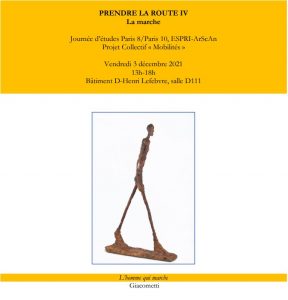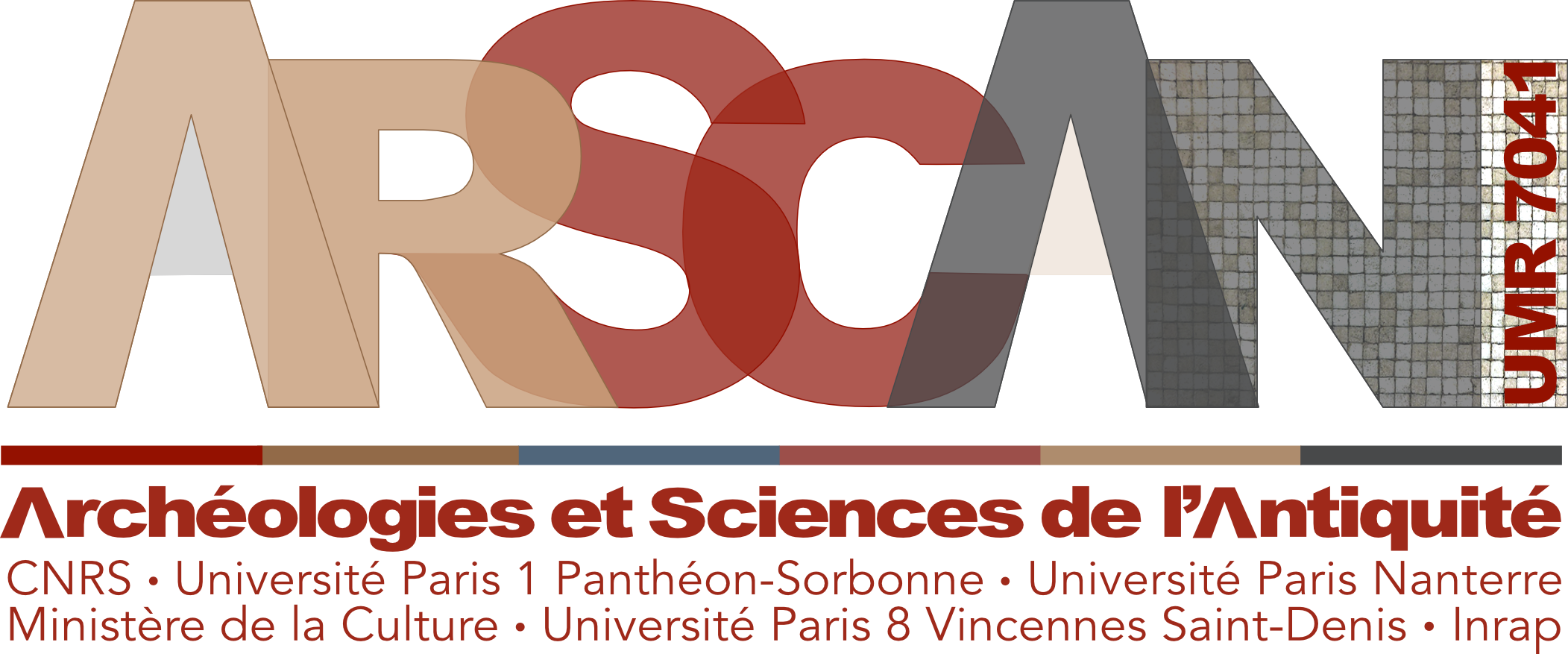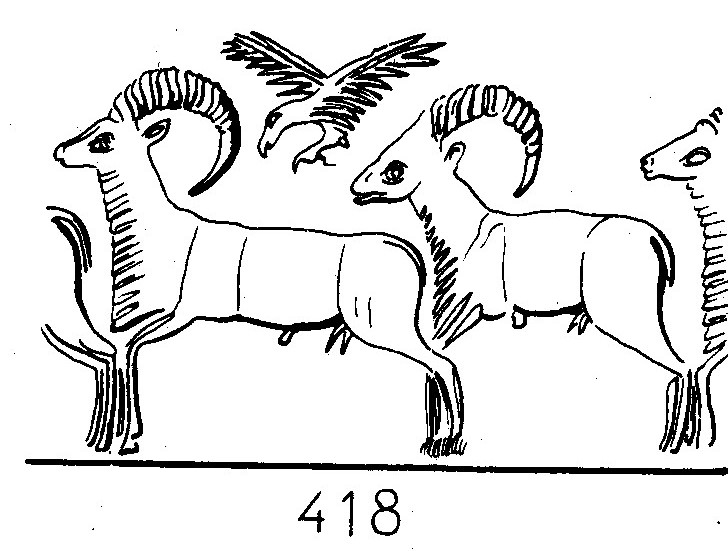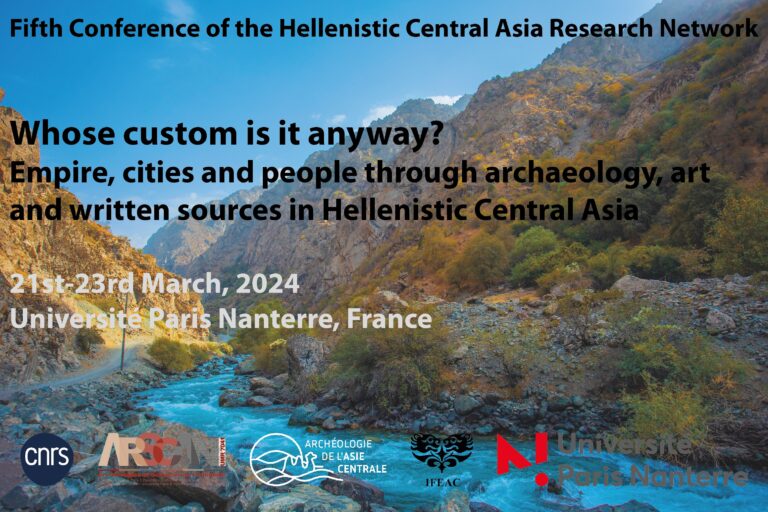PRENDRE LA ROUTE IV. La marche.
 Journée d’études Paris 8/Paris 10, ESPRI-ArScAn. Projet Collectif « Mobilités », Vendredi 3 décembre 2021, 13h-18h, Université Paris Nanterre, Bâtiment D – Henri Lefebvre, salle D111
Journée d’études Paris 8/Paris 10, ESPRI-ArScAn. Projet Collectif « Mobilités », Vendredi 3 décembre 2021, 13h-18h, Université Paris Nanterre, Bâtiment D – Henri Lefebvre, salle D111
En ligne (zoom) :
https://us05web.zoom.us/j/81252991040pwd=aVowd0JYVC85MFEwYVZNT2RVWWlLQT09
En espérant que le lien sera actif durant toute la séance (de nouveaux liens sont susceptibles d’être communiqués durant la rencontre).
Contact : Claudia Moatti (moatti@usc.edu), Pascale Ballet (pascale_ballet@yahoo.fr)
Dans le cadre de notre programme Mobilités, et après une première rencontre consacrée à La Marche (26 mars 2021), la séance du 3 décembre nous permettra d’aborder des sources non explorées jusqu’ici : sources rabbiniques, papyrologiques et mésopotamiennes. Trois communications seront présentées.
Programme détaillé et résumés des interventions :
13h: Accueil
13h15-13h30 : Introduction (Claudia Moatti)
13h30-14h30 : Catherine Hezser, Université de Londres : Wandering Rabbis: The Representation and Significance of Walking in Palestinian Rabbinic Literature of Late Antiquity
Walking on foot is presented as the main form of mobility associated with rabbis in Palestinian rabbinic literary sources of the first four centuries C.E. Should we consider the many references to wandering rabbis a mere literary device or do they reflect historical reality? What did the tradents and editors of these stories try to convey by presenting rabbis as wandering? To answer these questions we have to consider the broader context of walking as the most elementary form of mobility and the phenomenon of “wandering intellectuals”. Whereas Christian leaders travelled longer distances to establish and maintain communities around the Mediterranean, rabbis’ mobility was limited to the Near Middle East. Walking enabled rabbis to maintain collegial relations with each other and to exchange halakhic opinions. Walking therefore served to maintain rabbinic network connections in the rabbinically defined Land of Israel.
Discussion
15h Introduction (Pascale Ballet)
15h15 -16h : Simona Russo, Istituto G. Vitelli, Florence : Walking, walking like a Graeco-Roman Egyptian (en italien)
Documentary papyri of Graeco-Roman period don’t offer any evidence about walking. Apparently there is no verb specifically meaning “to walk”; no sentence is openly explaining the action of walking, but many texts and documents use verbs like “to go”, “to come”, etc.
Mobility of people and things, indeed, could be particularly by ship and/or animal.
Hence, it is very difficult to understand if those verbs were used to mean “to walk”, or “to go” by any other way of mobility.
Nevertheless, a specific and deep investigation into the open and much more into the hidden meaning of the contents of many documents – particularly private letters – could enable us to analyze and describe this topic.
The results of this study represent only some steps we may reach by the deep analysis of the big amount of documents we luckely have on hand.
Discussion
Pause
16h45-17h30 : Sophie Cluzan, Musée du Louvre, Département des Antiquités orientales, Mari, une communauté en marche. Images votives, rites et intégration dans un royaume de l’Euphrate au milieu du IIIe millénaire
Le royaume de Mari occupe une position stratégique sur les routes terrestres et fluviales qui, au milieu du IIIe millénaire avant notre ère, mettent en relation des mondes éloignés. Sur l’Euphrate, cette métropole organise la vie religieuse de la communauté autour de différents centres religieux. L’inventaire des richesses de ces sanctuaires met en lumière l’importance qu’ils accordent à l’image humaine présentée sous forme de statues, conçues comme des doubles animés, magiques et performatifs. Plus que dans tout autre royaume de la région syro-mésopotamienne, les temples de Mari accueillent ces statues votives en quantité, distinguant ce royaume au sein d’une tradition géographiquement plus largement attestée et caractéristique de la période. Outre cette forme d’omniprésence, les statues de Mari représentent les individus masculins en marche, en mouvement, quand les autres royaumes en font des images statiques. Le choix de cette manière adoptée par la communauté masculine pour se présenter dans l’enceinte sacrée sera discuté à l’aune des sources textuelles du royaume et la plus vaste région pour tenter d’établir une relation entre ces images, en marche, et les territoires, urbain et régional.
Discussion



